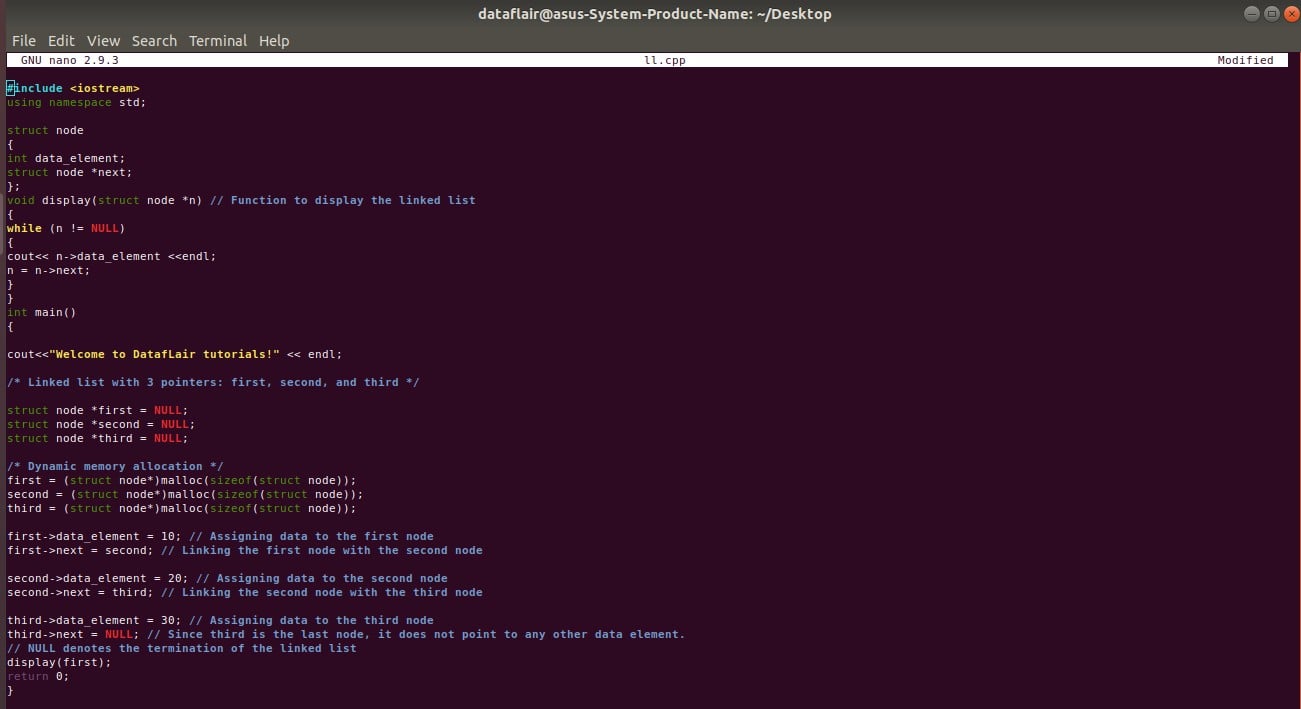
Process returned 0 (0x0) execution time : 51. Struct node* delete_at_end(struct node *head) cout< Struct node* delete_at_beg(struct node *head) You need an array to represent each node in a linked list. Struct node* insert_at_end(struct node *newnode) Struct node* insert_at_beg(struct node *newnode) Printf("The linked list is empty-cant delete\n") This post will discuss various linked list implementation techniques in detail and construct a singly linked list in the C programming language. We have also covered the applications of linked list data structure and its pros and cons concerning arrays. Printf("\n+++++++++++++++++++++++++++++++++++++++++++++\n") We have introduced the linked list data structure in the previous post and discussed various types of linked lists. Struct node* delete_at_end(struct node *) Struct node* delete_at_beg(struct node *) Struct node* insert_at_end(struct node *) Linked list is the second most-used data structure after array. Each link contains a connection to another link. Linked List is a sequence of links which contains items. Struct node* insert_at_beg(struct node *) A linked list is a sequence of data structures, which are connected together via links. Refer to Notes: Notes on Data Structures And Algorithms – Linked List Read & Delete the Data given to the node. The Programme should be like a Menu card:(using case numbers) The code should do the operation which is given by the user. Every node except the last node contains the address of the next node and it has two components. Each node in a linked list is a structure-defined data type that consists of data and a pointer referencing the address of the next node. Write a Modular C Programming code for All Operations ( inserting at the beginning & End | deleting from beginning & end | Display & exit) used in Nodes of Singly linked list | Data Structure. A linked list is a collection of components called nodes. A linked list is a type of linear data structure that uses nodes to store the data.


#LINKED LIST C CODE#


 0 kommentar(er)
0 kommentar(er)
